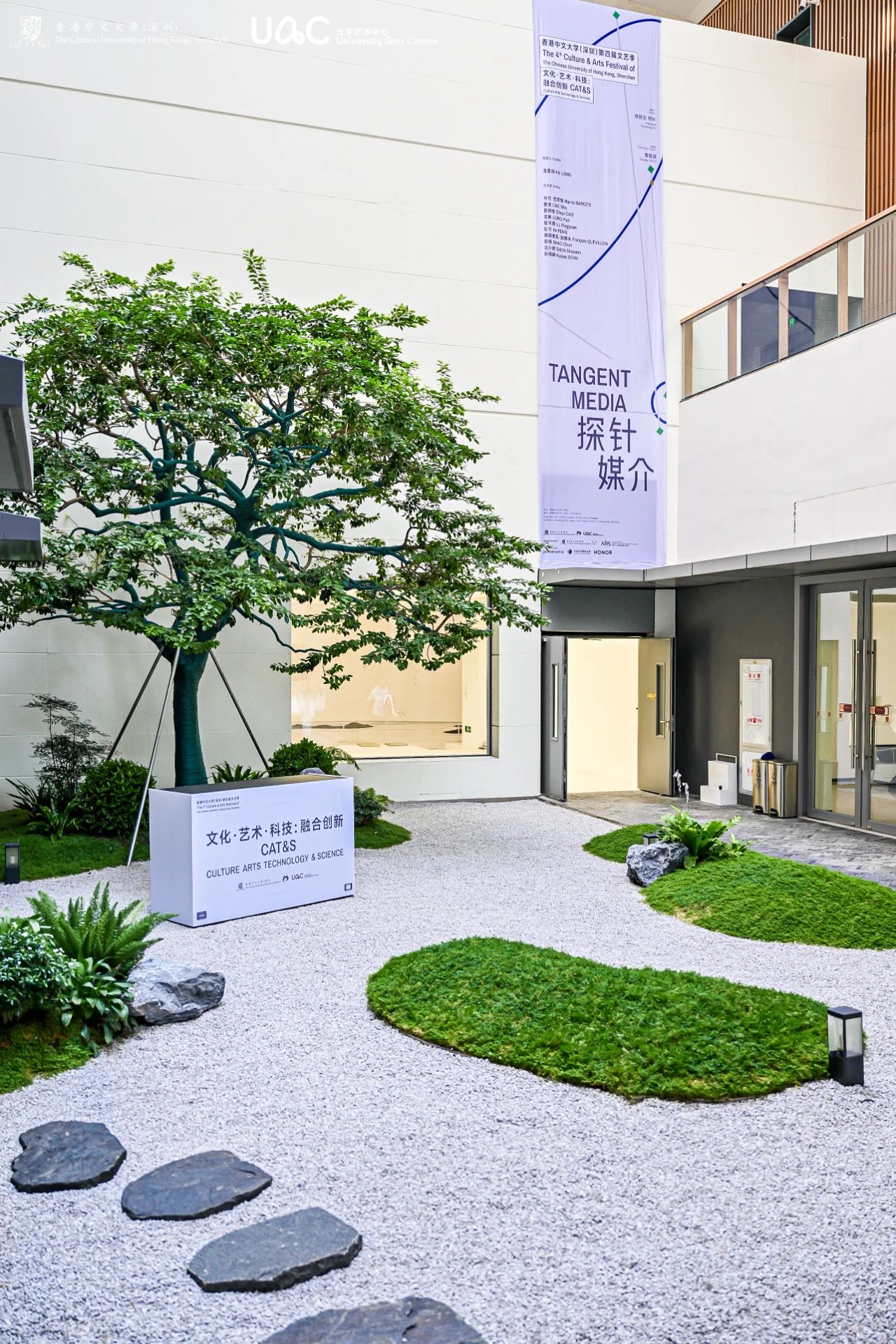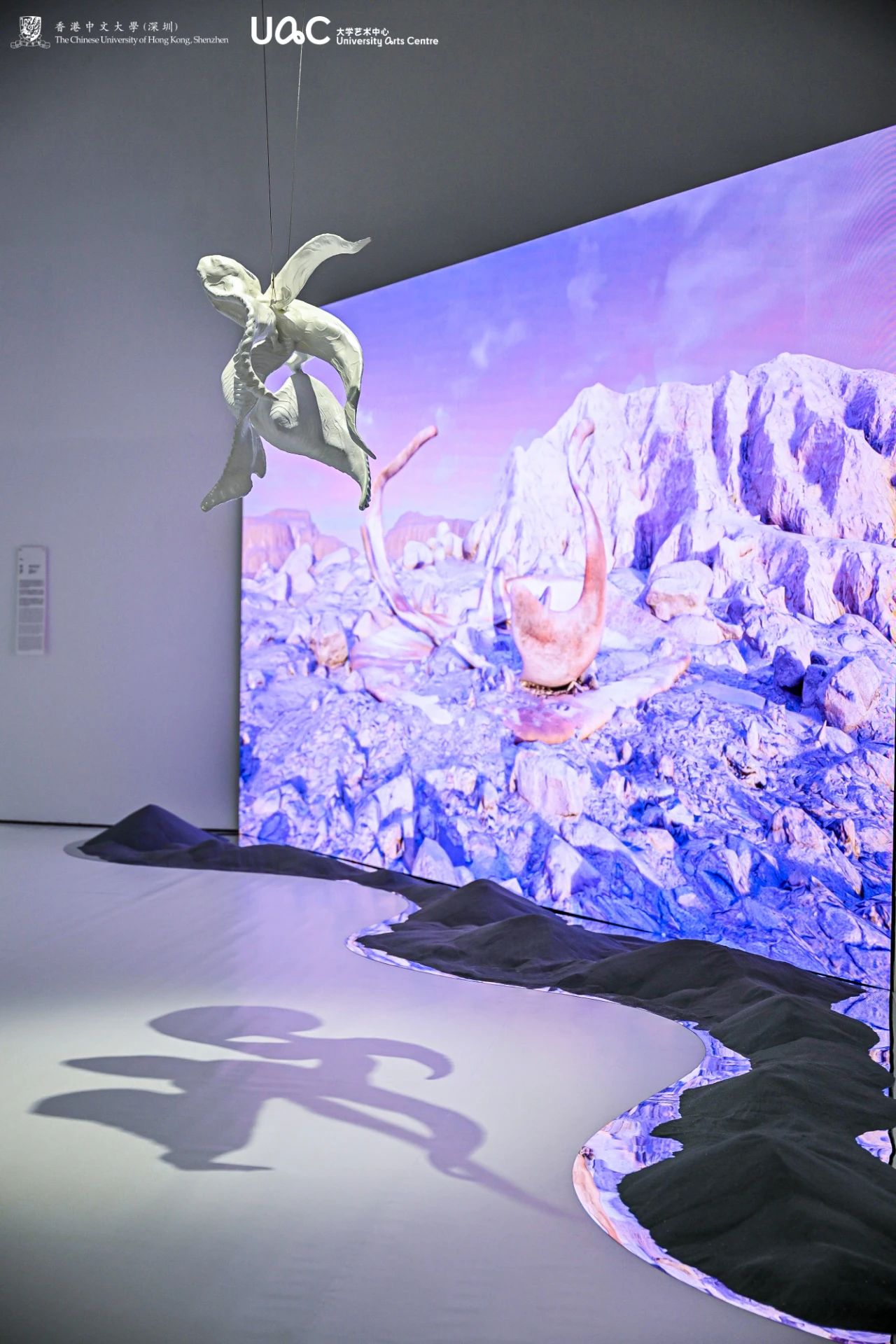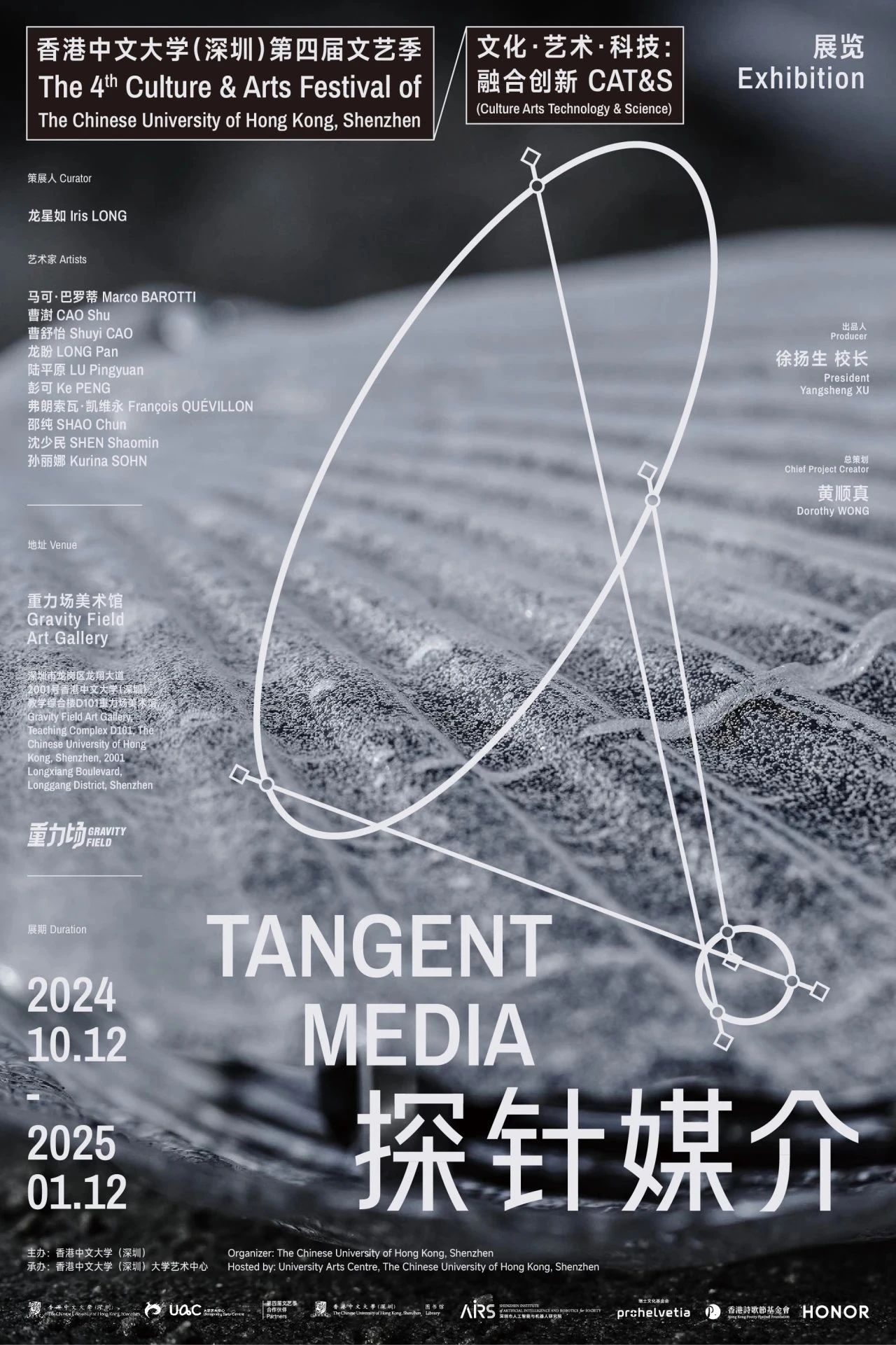Discover unique artwork at CUHK-Shenzhen
Writer: Cao Zhen | Editor: Lin Qiuying | From: Original | Updated: 2024-10-22
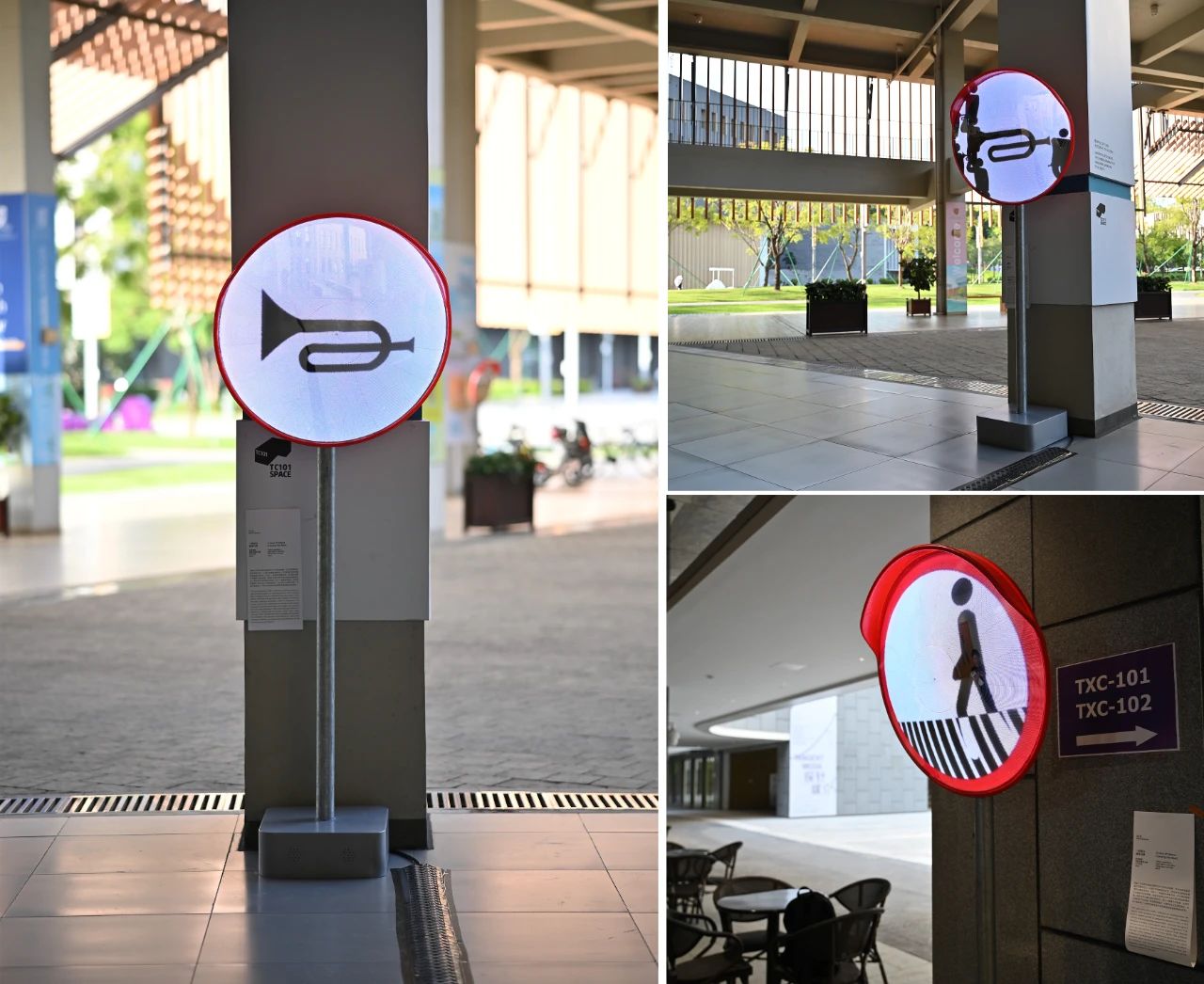
Shen Shaomin's installations "A Herd of Zebras Crossing the Road" can be seen in various locations at the CUHK-Shenzhen campus. Photos by Wang Peichao
Visitors who explore The Chinese University of Hong Kong, Shenzhen (CUHK-Shenzhen) campus in Longgang District are sure to spot several convex traffic mirrors, which are normally used to see around corners. Upon closer inspection, one will notice that these mirrors display videos.
The convex-mirror video installations were created by Shen Shaomin, a Shenzhen-based artist, poet, and documentary director who is renowned for his mind-blowing contemporary art. The artwork’s title, "A Herd of Zebras Crossing the Road," is from one of his one-line poems.
In the description of the installation, Shen explained:"When passersby catch glimpses of themselves in these convex mirrors and then watch videos on the mirror-screens, it becomes an unexpected encounter. Here, the road signs transcend their conventional role as symbols of regulation and direction — they offer new perspectives and reflections on daily life."
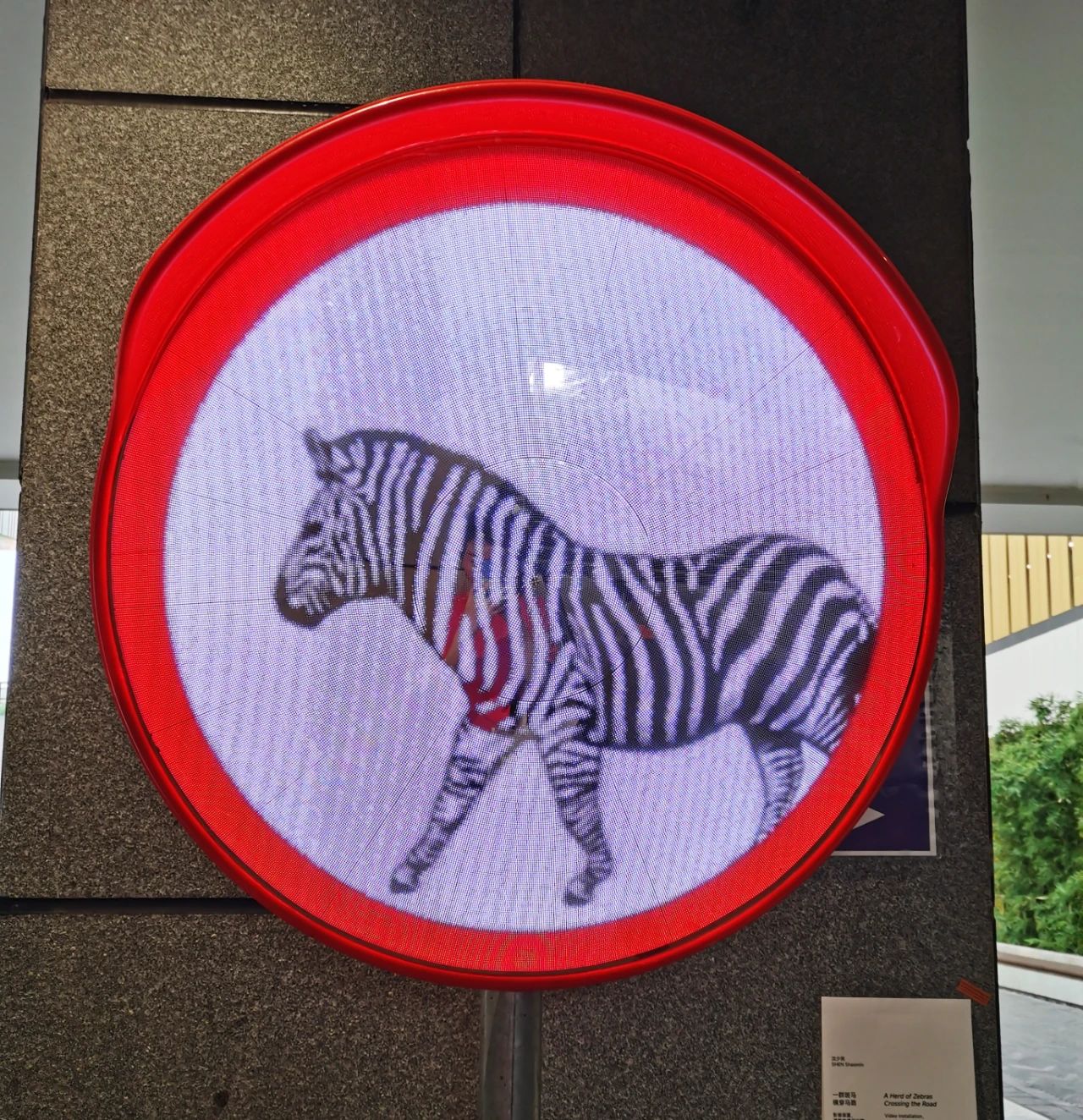
Shen Shaomin's installation"A Herd of Zebras Crossing the Road." Photos by Cao Zhen unless otherwise stated
Shen's work is part of the "Tangent Media" exhibition, which has other pieces on display at the Gravity Field Art Gallery at CUHK-Shenzhen. The exhibition showcases new media works from 10 artists with interdisciplinary approaches, including Marco Barotti, Cao Shu, Cao Shuyi, Long Pan, Lu Pingyuan, Peng Ke, François Quévillon, Shao Chun, Shen Shaomin, and Kurina Sohn.
In mathematics, a tangent is a straight line that touches a curve at a single point. The exhibition uses this concept to explore issues and concepts like the climate crisis, the Anthropocene, and the age of intelligence. Scientific and technological art illustrates how small observations can lead to larger truths, according to exhibition curator Iris Long.
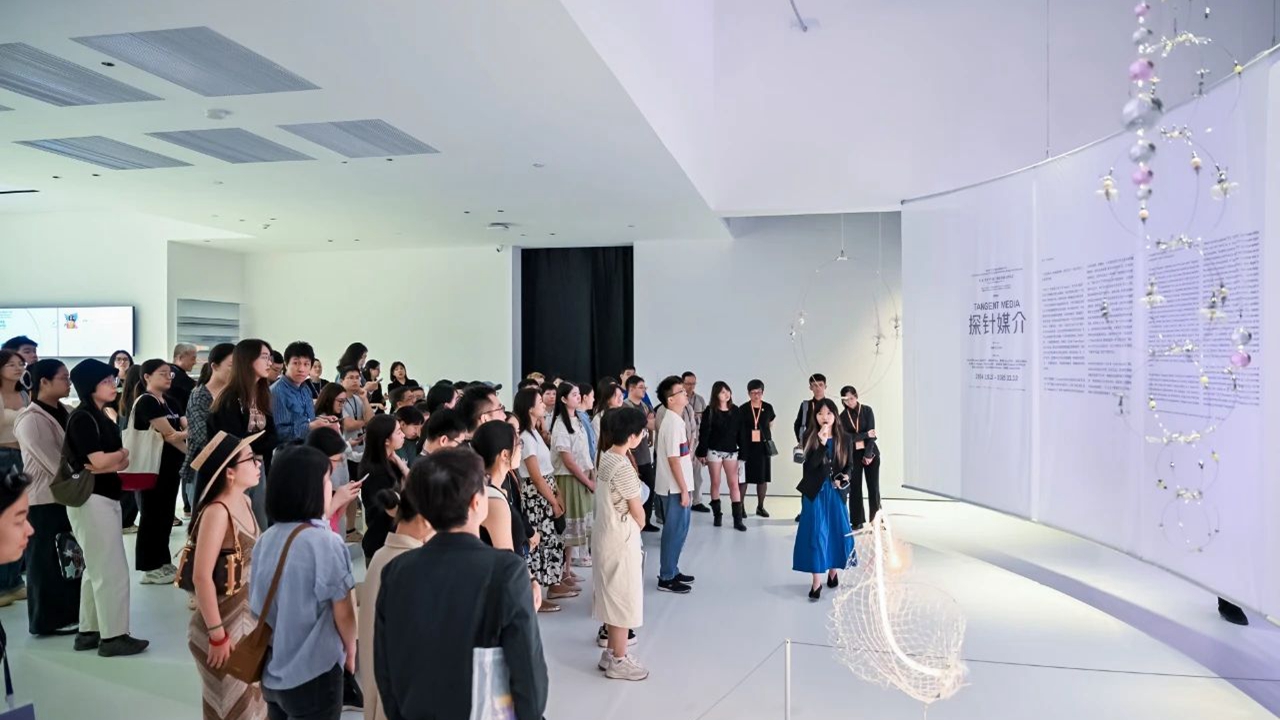 The exhibition curator Iris Long introduces the exhibition to visitors Oct. 12. Photo courtesy of the organizer
The exhibition curator Iris Long introduces the exhibition to visitors Oct. 12. Photo courtesy of the organizer
Visitors do not need to understand what a tangent is to enjoy the insightful exhibits. For example, Barotti's "Clams" is a collection of clam-shaped kinetic sound sculptures that have attracted many viewers at the exhibition due to their unique appearance.
Each "clam" is constructed from recycled waste plastic and contains a loudspeaker. The artist places sensors in rivers, lakes, or seas near the site where the installation is presented. The work for the Shenzhen exhibition is based on the water quality of a lake near CUHK-Shenzhen.
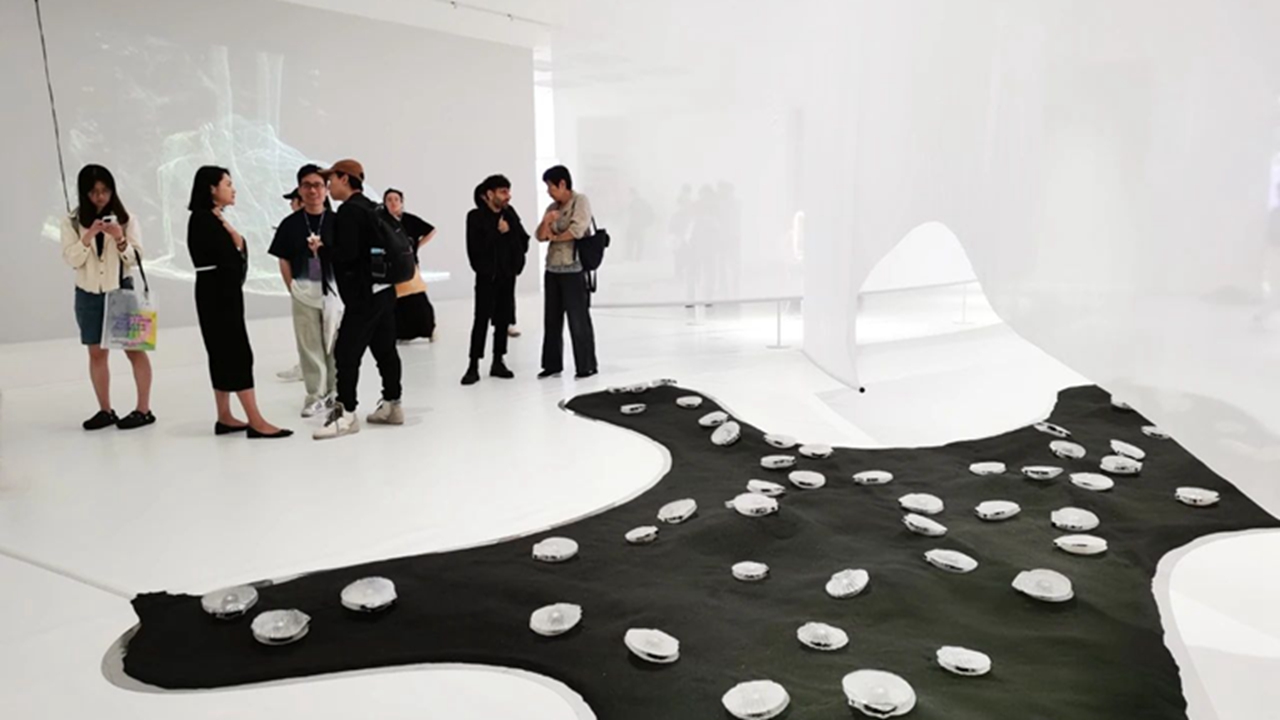
Marco Barotti's "Clams" is on display at the exhibition at CUHK-Shenzhen.
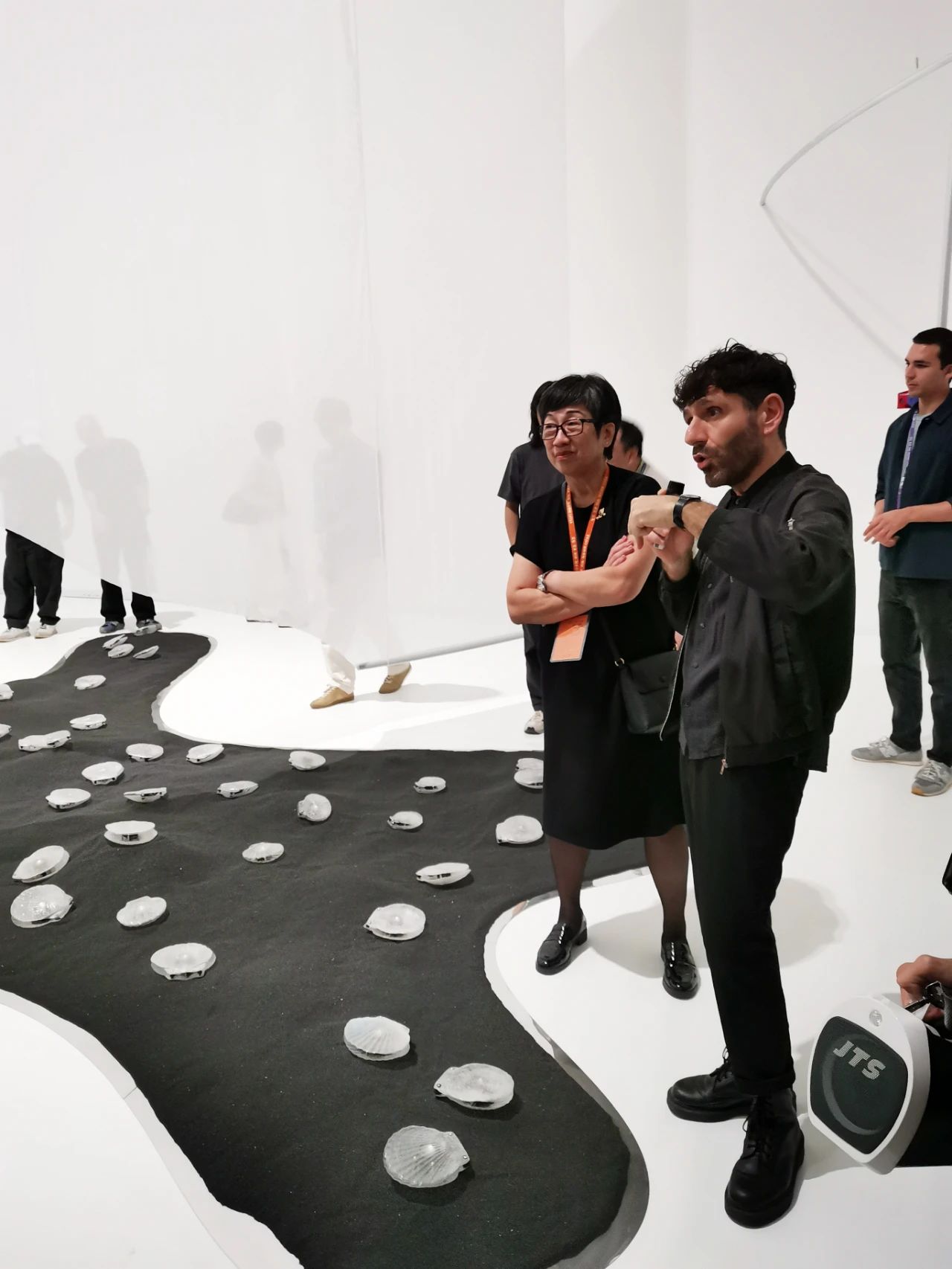
Marco Barotti (front) talks about his "Clams" to visitors Oct. 12.
The sensors send real-time data to a server, which communicates with a series of computer applications that convert water quality data into bass frequencies. This generates the opening and closing movements of the "clams" and an evolving microtonal soundscape that varies with water quality over time.
Barotti invites viewers to draw connections between media art, data sonification, and environmental sustainability through this work. He noted that in nature, clams are some of the best indicators of pollution and serve as tiny filters in our ecosystem.
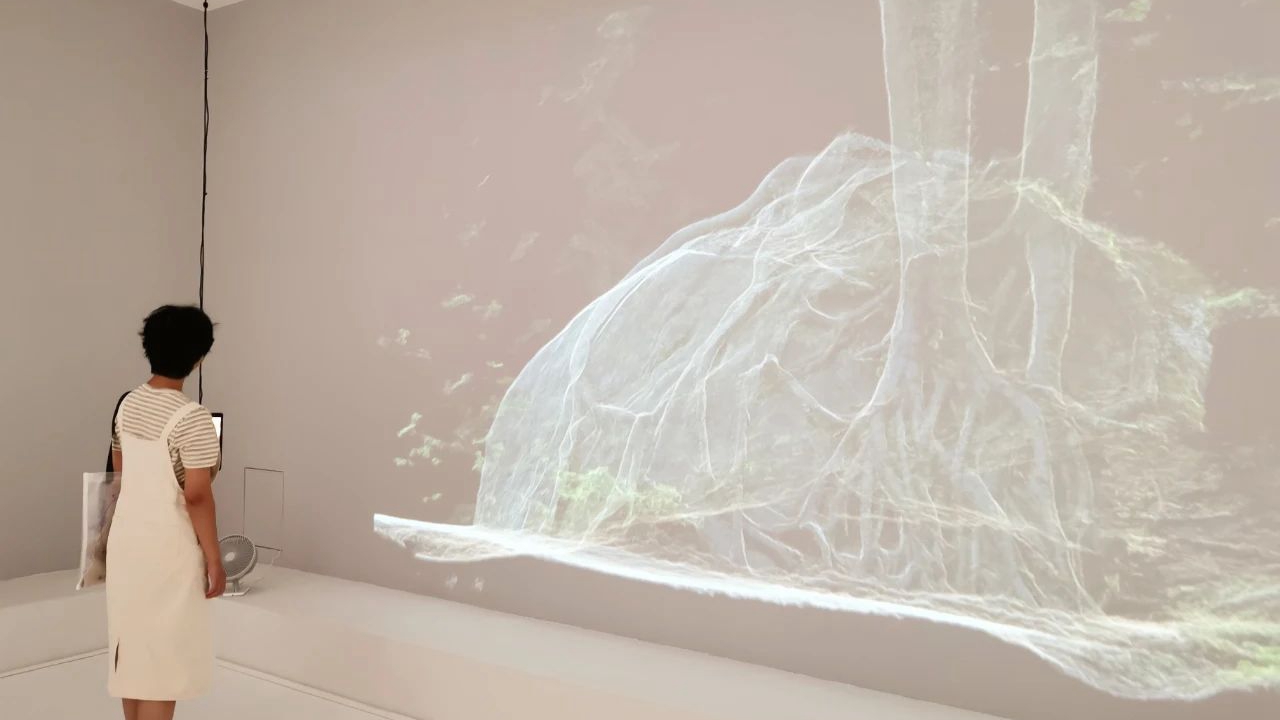 A visitor observes an artwork created by François Quévillon at the exhibition.
A visitor observes an artwork created by François Quévillon at the exhibition.
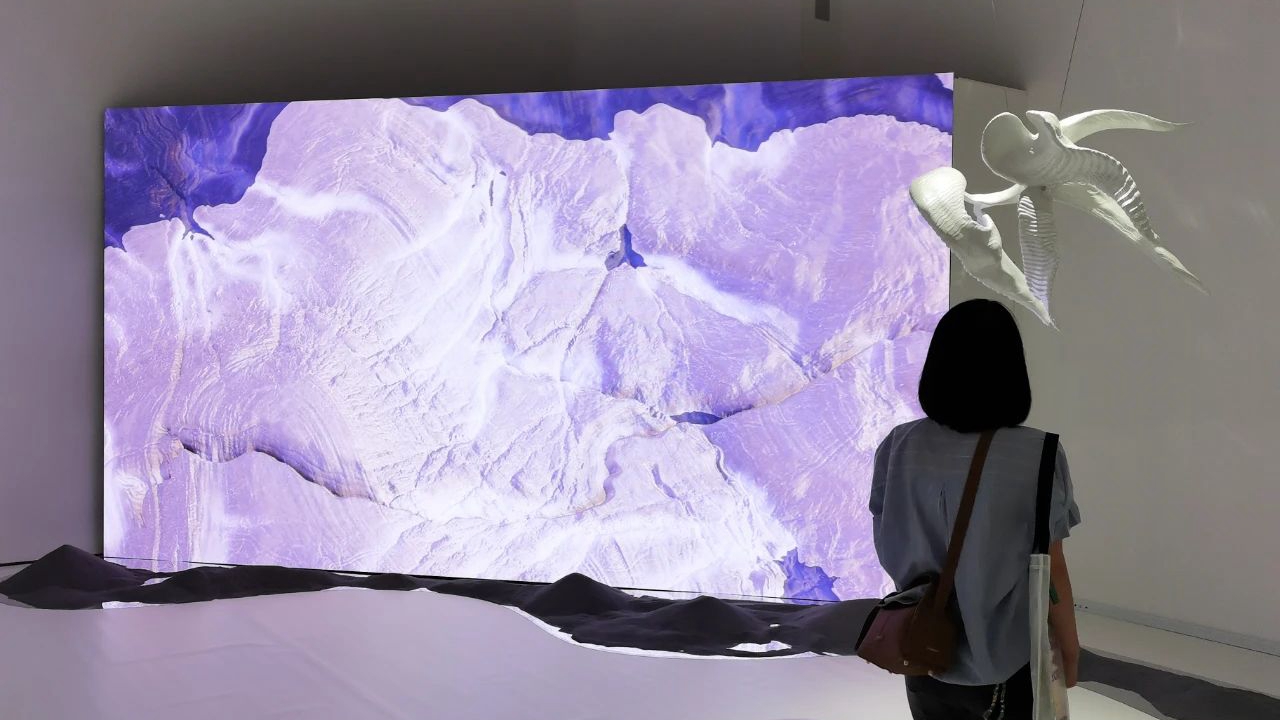
A visitor admires an artwork created by Cao Shuyi at the exhibition.
The exhibition is part of the fourth Culture & Arts Festival "CAT&S" (Culture Arts Technology & Science) activities, celebrating the 10th anniversary of CUHK-Shenzhen and the fifth anniversary of CUHK-Shenzhen's University Arts Center.
The festival features visual art and performing arts, aiming to create an interdisciplinary exchange platform through the integration of art and technology, while cultivating new talent with cross-disciplinary skills through cultural innovation.
Dates: Through Jan. 12, 2025
Hours: 10 a.m.-5:30 p.m. (The exhibition is open to CUHK-Shenzhen staff and students every day. On weekends, non-staff and non-student visitors can enter the exhibition by presenting their ID cards at the university entrance.)
Venue: Gravity Field Art Gallery, Teaching Complex D101, The Chinese University of Hong Kong, Shenzhen, Longgang District (龙岗区香港中文大学(深圳)教学综合楼D101重力场美术馆)
Metro: Line 16 to Universiade Center Station (大运中心站), Exit D
More photos from the exhibition organizer:
